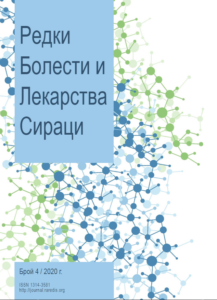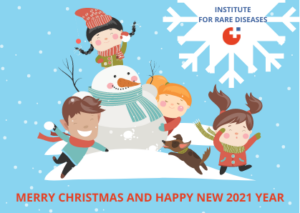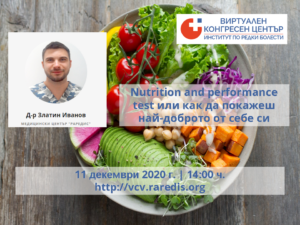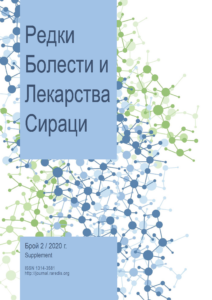 Medication related osteonecrosis of the jaw (MRONJ) is a serious side effect of anti-resorptive and anti-angiogenic agents. This is a potentially painful and debilitating condition that can significantly affect patients’ quality of life. In this report, we present the case of a 67-year-old female patient who was diagnosed with left breast cancer in 2014. In 2015, bone grafts were detected, and the patient began denosumab and zoledronic acid therapy. After extraction of a tooth in 2016, the bone of the mandible was exposed and osteonecrosis was diagnosed. The patient was admitted to the Clinic of Maxillofacial Surgery for treatment in Plovdiv, where she underwent computed tomography of the lower jaw (CTLM) and then underwent platelet-rich fibrin (PRF) treatment. After hemostasis, PRF was applied and the wound was sutured tightly. The patient was followed up within 1 year and very good results were found with regard to soft tissues and bone at the site of the osteonecrotic lesion. Based on the findings in the literature and in the case described here, it can be concluded that the use of PRF should be considered in the treatment of patients with MRONJ. Read the whole article here.
Medication related osteonecrosis of the jaw (MRONJ) is a serious side effect of anti-resorptive and anti-angiogenic agents. This is a potentially painful and debilitating condition that can significantly affect patients’ quality of life. In this report, we present the case of a 67-year-old female patient who was diagnosed with left breast cancer in 2014. In 2015, bone grafts were detected, and the patient began denosumab and zoledronic acid therapy. After extraction of a tooth in 2016, the bone of the mandible was exposed and osteonecrosis was diagnosed. The patient was admitted to the Clinic of Maxillofacial Surgery for treatment in Plovdiv, where she underwent computed tomography of the lower jaw (CTLM) and then underwent platelet-rich fibrin (PRF) treatment. After hemostasis, PRF was applied and the wound was sutured tightly. The patient was followed up within 1 year and very good results were found with regard to soft tissues and bone at the site of the osteonecrotic lesion. Based on the findings in the literature and in the case described here, it can be concluded that the use of PRF should be considered in the treatment of patients with MRONJ. Read the whole article here.
informer
 We present a rare case of a 13-year-old male patient from Eastern European population with complaints of pain, discomfort, swelling, and bruising in the left shoulder. After low-dose computed tomography angiography, a giant, segmental, arteriovenous hemangioma was detected. Several hypotheses have been proposed for the pathogenesis of pediatric hemangiomas, but the exact etiology of these lesions remains unclear. It is widely believed that females in the Caucasian population are most affected. Hemangiomas are more likely to be associated with developmental abnormalities and have typical behavior over time with devolution stage. Although benign, hemangiomas can cause serious and permanent damage, especially those located in depth, near bones, joint spaces, or parenchymal organs. The challenge for clinicians is to identify which hemangiomas need vigilant monitoring and / or surgery. Read the whole article here.
We present a rare case of a 13-year-old male patient from Eastern European population with complaints of pain, discomfort, swelling, and bruising in the left shoulder. After low-dose computed tomography angiography, a giant, segmental, arteriovenous hemangioma was detected. Several hypotheses have been proposed for the pathogenesis of pediatric hemangiomas, but the exact etiology of these lesions remains unclear. It is widely believed that females in the Caucasian population are most affected. Hemangiomas are more likely to be associated with developmental abnormalities and have typical behavior over time with devolution stage. Although benign, hemangiomas can cause serious and permanent damage, especially those located in depth, near bones, joint spaces, or parenchymal organs. The challenge for clinicians is to identify which hemangiomas need vigilant monitoring and / or surgery. Read the whole article here.
Commission launches consultation on patients’ rights in cross-border healthcare
 The European Commission is carrying out an evaluation of the Directive on patients’ rights in cross-border healthcare, ten years after the adoption of this law. Have your say!
The European Commission is carrying out an evaluation of the Directive on patients’ rights in cross-border healthcare, ten years after the adoption of this law. Have your say!
The evaluation will assess the effectiveness of the Directive’s goal: to facilitate EU citizens’ access to safe and high quality cross-border healthcare in another EU country. It will also assess to what extent the Directive has promoted patients’ rights and cross-border cooperation between Member States for the benefit of EU citizens, in particular for patients with rare and complex diseases. The evaluation will also determine how effective are the approaches carried out by the different EU countries ; what barriers patients are still facing when seeking planned healthcare across borders and the benefits provided by the European Reference Networks for the treatment and diagnosis of rare and complex diseases.
More information:
Multiple subcutaneous metastases from lung cancer – rare case in practice
 Introduction: Soft tissue metastases from lung carcinoma in the skeletal muscles, subcutaneous tissue and skin are rare. They mostly develop in already diagnosed patients and in very rare cases occur simultaneously or prior the visualization of the primary malignant tumor.
Introduction: Soft tissue metastases from lung carcinoma in the skeletal muscles, subcutaneous tissue and skin are rare. They mostly develop in already diagnosed patients and in very rare cases occur simultaneously or prior the visualization of the primary malignant tumor.
Clinical case: It concerns a 50-year-old woman who smokes and has multiple nodular lesions located in the area of the soft tissues and the subcutaneous tissue of the dorsum, thorax and abdomen. The findings vary in size from a few millimeters to 47 mm. Some of them move at palpation while others are dense, painful and red. Duration of changes: two months prior the visit to the diagnostic center. Computed tomography (CT) of the thorax and abdomen was performed without and after intravenous contrast administration. A large soft tissue formation was found involving the upper anterior mediastinum asymmetrically to the right with infiltration of the large vessels, along with lymph node metastases of neck and mediastinum, metastases in both adrenal glands and diffuse soft tissue subcutaneous and skin metastases. The histological study revealed small-cell lung carcinoma and chemotherapy was administered. The patient passed away four months after starting the treatment.
Conclusion: Subcutaneous nodular metastases reflect an advanced malignant process and are rarely the first manifestation of oncological disease. When they result from small-cell lung cancer, they are indicative of high malignancy and are associated with low survival rate. Read the whole article here.
 The new issue of our scientific journal Rare Diseases and Orphan Drugs is now online. The issue contains 7 publications on various topics. The editorial is “Rare diseases in 2020 – what did we learn?”.
The new issue of our scientific journal Rare Diseases and Orphan Drugs is now online. The issue contains 7 publications on various topics. The editorial is “Rare diseases in 2020 – what did we learn?”.
2020 is over, but its consequences and effects will certainly continue for a long time. The COVID-19 pandemic is an unprecedented challenge for all societies and health systems. On the other hand, every crisis brings opportunities for rethinking, change and progress. Rare diseases and people affected in some way or working in this field are an excellent example of a society that has managed to come together and work together to overcome a particular problem. A direct comparison between COVID-19 and rare diseases is, of course, inapplicable and inappropriate. But in the end, the principles and values of universality, access to quality healthcare, justice and solidarity are generally valid and retain their fundamental function and paramount importance in every public health issue.
One of possibly the most important lessons of 2020 is the perceived role of communication and the sharing of knowledge and expertise in a virtual environment. This is not a new topic at all. Everyone so far has been actively communicating on the Internet, taking online training courses and attending virtual events. But the mass use and lack of an alternative other than online communication in 2020 is undoubtedly something new. Virtual communication cannot replace or fill the presonal one, but it definitely has its advantages and strengths. The Eleventh National Conference for Rare Diseases and Orphan Drugs clearly demonstrates some of them. Read the whole article here.
 Contact person:
Contact person:
Irena Neshovska
Mobile phone: +359 899 86 80 60
E-mail: myasthenia.foundation@gmail.com
Postal address:
Bulgaria, Varna, 17 Stoyan Batsov Str.
Board of Founders:
Irena Neshovska – president
Anita Daneva – founder
Denis Voznitsa – founder
Facebook group – closed (intended for patients) Myasthenia Gravis Foundation
Page – Myasthenia Gravis Foundation
The foundation aims to:
To support people with myasthenia gravis in Bulgaria. Uniting patients in a community, protection of their human and civil rights. Providing information, exchange of experience and mutual assistance. Contacts and interaction with other patient organizations. Interaction with state and public institutions. Providing funds for the implementation of the Myasthenia Gravis Foundation goals.

We would like to wish our friends and partners Merry Christmas and Happy New Year! Thank you for your cooperation in 2020! We hope all of us will have a safe and relaxing festive holiday. We look forward to seeing you in 2021!
 On 11 December, 2020 at 2 pm in hall Stara Zagora of the Virtual Congress Venue, Dr. Zlatin Ivanov will present a lecture about “Nutrition and performance test or how to show the best of yourself.” During the webinar we will learn what represent Nutrition and Performance tests and how they are conducted. Dr. Ivanov will discuss basic concepts in nutrition and physical activity, as well as what direction the results of these tests give. The lecture is intended for medical professionals, academia representatives, all interested of healthy lifestyle, athletes and anyone who wants to improve their performance.
On 11 December, 2020 at 2 pm in hall Stara Zagora of the Virtual Congress Venue, Dr. Zlatin Ivanov will present a lecture about “Nutrition and performance test or how to show the best of yourself.” During the webinar we will learn what represent Nutrition and Performance tests and how they are conducted. Dr. Ivanov will discuss basic concepts in nutrition and physical activity, as well as what direction the results of these tests give. The lecture is intended for medical professionals, academia representatives, all interested of healthy lifestyle, athletes and anyone who wants to improve their performance.
At this link you can register for the event for free.
 Since its first clinical description (on his son) by William James West (1793-1848) in 1841, and the definition of the classical triad of (1) infantile spasms; (2) hypsarrhythmia, and (3) developmental arrest or regression as “West syndrome”, new and relevant advances have been recorded in this uncommon disorder. New approaches include terminology of clinical spasms (e.g., infantile (IS) vs. epileptic spasms (ES)), variety of clinical and electroencephalographic (EEG) features (e.g., typical ictal phenomena without EEG abnormalities), burden of developmental delay, spectrum of associated genetic abnormalities, pathogenesis, treatment options, and related outcome and prognosis. Aside the classical manifestations, IS or ES may present with atypical electroclinical phenotypes (e.g., subtle spasms; modified hypsarrhythmia) and may have their onset outside infancy. An increasing number of genes, proteins, and signaling pathways play crucial roles in the pathogenesis. This condition is currently regarded as a spectrum of disorders: the so-called infantile spasm syndrome (ISs), in association with other causal factors, including structural, infectious, metabolic, syndromic, and immunologic events, all acting on a genetic predisposing background. Hormonal therapy and ketogenic diet are widely used also in combination with (classical and recent) pharmacological drugs. Biologically targeted and gene therapies are increasingly studied. The present narrative review searched in seven electronic databases (primary MeSH terms/keywords included West syndrome, infantile spasms and infantile spasms syndrome and were coupled to 25 secondary clinical, EEG, therapeutic, outcomes, and associated conditions terms) including MEDLINE, Embase, Cochrane Central, Web of Sciences, Pubmed, Scopus, and OMIM to highlight the past knowledge and more recent advances. For more information click here. For more information click here.
Since its first clinical description (on his son) by William James West (1793-1848) in 1841, and the definition of the classical triad of (1) infantile spasms; (2) hypsarrhythmia, and (3) developmental arrest or regression as “West syndrome”, new and relevant advances have been recorded in this uncommon disorder. New approaches include terminology of clinical spasms (e.g., infantile (IS) vs. epileptic spasms (ES)), variety of clinical and electroencephalographic (EEG) features (e.g., typical ictal phenomena without EEG abnormalities), burden of developmental delay, spectrum of associated genetic abnormalities, pathogenesis, treatment options, and related outcome and prognosis. Aside the classical manifestations, IS or ES may present with atypical electroclinical phenotypes (e.g., subtle spasms; modified hypsarrhythmia) and may have their onset outside infancy. An increasing number of genes, proteins, and signaling pathways play crucial roles in the pathogenesis. This condition is currently regarded as a spectrum of disorders: the so-called infantile spasm syndrome (ISs), in association with other causal factors, including structural, infectious, metabolic, syndromic, and immunologic events, all acting on a genetic predisposing background. Hormonal therapy and ketogenic diet are widely used also in combination with (classical and recent) pharmacological drugs. Biologically targeted and gene therapies are increasingly studied. The present narrative review searched in seven electronic databases (primary MeSH terms/keywords included West syndrome, infantile spasms and infantile spasms syndrome and were coupled to 25 secondary clinical, EEG, therapeutic, outcomes, and associated conditions terms) including MEDLINE, Embase, Cochrane Central, Web of Sciences, Pubmed, Scopus, and OMIM to highlight the past knowledge and more recent advances. For more information click here. For more information click here.
 For the 11th consecutive year, the Institute for Rare Diseases organized and held National Conference for Rare Diseases and Orphan Drugs. Participants in a poster session presented their researches on various topics related to rare diseases. This book presents the proceedings of posters and it is published as a supplement on the website of the scientific journal “Rare Diseases and Orphan Drugs”. The e-book can be downloaded or viewed online at the following link.
For the 11th consecutive year, the Institute for Rare Diseases organized and held National Conference for Rare Diseases and Orphan Drugs. Participants in a poster session presented their researches on various topics related to rare diseases. This book presents the proceedings of posters and it is published as a supplement on the website of the scientific journal “Rare Diseases and Orphan Drugs”. The e-book can be downloaded or viewed online at the following link.
